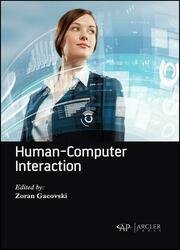Human-Computer Interaction (2020)
- Добавил: literator
- Дата: 6-07-2021, 03:26
- Комментариев: 0
 Название: Human-Computer Interaction
Название: Human-Computer InteractionАвтор: Zoran Gacovski
Издательство: Arcler Press
Год: 2020
Страниц: 422
Язык: английский
Формат: pdf (true)
Размер: 11.6 MB
Human-Computer Interaction takes into account the development of human-computer interaction methods. It includes the development and preliminary investigation of a semiautonomous socially assistive robot and ergonomic design of human-CNC machine interface. This book also discusses about real-world applications of HCI techniques, non-intrusive physiological monitoring for affective sensing of computer users, modeling human-computer interaction in smart spaces: existing and emerging techniques, structured light illumination methods for continuous motion hand and face-computer interaction, a method for designing physical user interfaces for intelligent production environments and the role of head-up display in computer-assisted instruction. The goal of this edition is to cover different aspects of the human-computer interaction (both theoretical and practical).
Section 1 focuses on development and design of HCI methods, describing the influence of a virtual agent’s (non)cooperative behavior on user’s cooperation behavior in the prisoners’ dilemma, development of a human-computer interface system using EOG, development and preliminary investigation of a semiautonomous socially assistive robot, ergonomic design of human-CNC machine interface.
Section 2 focuses on real-world applications of HCI techniques, describing non-intrusive physiological monitoring for affective sensing of computer users, modeling human-computer interaction in smart spaces, application prospects of the augmented reality technology, miniaturized human 3D motion input.
Section 3 focuses on data entry and physical interaction systems, describing structured light illumination methods for continuous motion hand, method for designing physical user interfaces for intelligent production environments, new PC-based text entry system based on EOG coding, head-mounted displays in ultrasound scanning.
Section 4 focuses on assistive and cognitive role of the HCI techniques, describing improved human-computer interaction by developing culture-sensitive applications role of head-up display in computer-assisted instruction, reactions in the form of facial expressions during human-computer interaction, the gap between users’ and designers’ mental models.
Скачать Human-Computer Interaction
[related-news] [/related-news]
Внимание
Уважаемый посетитель, Вы зашли на сайт как незарегистрированный пользователь.
Мы рекомендуем Вам зарегистрироваться либо войти на сайт под своим именем.
Уважаемый посетитель, Вы зашли на сайт как незарегистрированный пользователь.
Мы рекомендуем Вам зарегистрироваться либо войти на сайт под своим именем.
